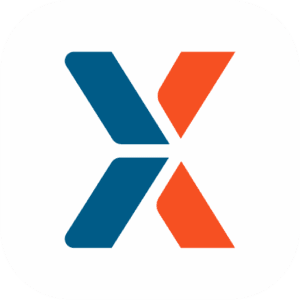Why growing retail chains are ditching spreadsheets for automated procurement systems that scale with their business
The furniture retail industry has experienced unprecedented growth since 2020, with many retailers expanding from single locations to multi-showroom operations in just a few years. But this rapid expansion has created a common challenge: procurement processes that worked for small operations quickly become bottlenecks as companies scale.
We recently spoke with decision-makers at several growing furniture retailers about their procurement challenges. Their stories reveal a pattern of operational pain points that many expanding retail businesses face – and solutions that are helping them modernize without disrupting their core business operations.
The Growing Pains of Retail Expansion
Consider a typical growth story: a furniture retailer that operated a handful of showrooms pre-COVID has now expanded to 25+ locations. Marketing departments have specialized into social media, copywriting, and campaign management teams. Each location needs supplies, maintenance, and local services. Corporate offices require technology, professional services, and operational support.
What worked when everything was managed from a single office – usually spreadsheets and manual approval processes – becomes unmanageable at scale.
“We’ve grown super big, and certain parts of us haven’t grown as quick,” explained one head of accounts we spoke with. “We’re still trying to catch up with systems and processes.”
The Hidden Costs of Manual Procurement
The challenges these growing retailers face are surprisingly consistent:
Budget Visibility Crisis
Department heads create their own tracking systems – typically “massive Google sheets” – that work for their teams but are impossible for finance to consolidate. The result? CFOs and controllers have no real-time visibility into what’s been committed, what’s pending, or what’s left in budgets.
Cash Flow Uncertainty
Without proper purchase order systems, finance teams struggle to forecast cash flow. They know what’s been spent, but not what’s been approved and will hit the books in coming weeks.
Approval Bottlenecks
Paper-based or email approval processes create delays and audit trail gaps. Managers become bottlenecks, and urgent purchases get stalled in bureaucracy.
Compliance Gaps
Multi-location operations need consistent procurement policies, but manual systems make it difficult to enforce spending limits, require proper documentation, or maintain audit trails.
Why QuickBooks Integration Matters for Retailers
One pattern we’ve observed: successful growing retailers almost universally use QuickBooks for their core accounting. They’ve built their financial processes, reporting, and compliance around it. The idea of switching to a completely different system for procurement creates two major problems:
- Double data entry – Staff must enter the same information in both systems
- Workflow disruption – Finance teams must learn new interfaces and create new reporting processes
The most successful implementations we’ve seen maintain QuickBooks as the financial system of record while adding procurement controls that sync seamlessly. This approach lets retailers modernize procurement without disrupting their existing financial operations.
Real-World Solution Framework
Based on our conversations with growing furniture retailers, here’s the procurement framework that’s proving most effective:
Department-Specific Budget Controls
Each department – marketing, operations, individual showrooms – sees only their allocated budgets and can raise purchase requests within their authority limits. Finance maintains visibility across all departments while empowering teams to move quickly on routine purchases.
Automated Approval Workflows
Purchases under certain thresholds get auto-approved for budget holders. Larger purchases route to appropriate managers based on amount, category, or department. Emergency purchases have expedited approval paths.
Flexible Invoice Processing
High-volume, routine invoices (like from furniture suppliers) can continue through existing automated processing systems. New procurement workflows handle everything else – maintenance, marketing services, technology purchases, professional services.
Project and Job Tracking
Marketing campaigns, store renovations, and special projects can be tracked separately with custom fields that sync to QuickBooks for accurate project accounting.
Implementation Approach That Works
The retailers we’ve spoken with emphasize speed and simplicity in their requirements. They need systems that can be set up quickly and don’t require extensive staff training.
Successful implementations typically follow this pattern:
- Quick setup – Systems configured in days or weeks, not months
- Phased rollout – Start with corporate office, then expand to showrooms
- Minimal training – Intuitive interfaces that staff can learn in minutes
- Flexible controls – Easy to adjust approval limits and workflows as the business evolves
The ROI of Getting It Right
Retailers who successfully modernize their procurement report several immediate benefits:
- Budget control – Zero budget overruns once automated controls are in place
- Cash flow visibility – Real-time view of committed but not yet invoiced amounts
- Process efficiency – Eliminating paper trails and manual approval bottlenecks
- Audit readiness – Complete documentation of every purchase decision
- Team empowerment – Department heads can manage their spending without constant finance involvement
One retail CFO told us: “Since adopting our procurement system, we have been able to increase control over purchase approvals – we have not overrun budget since then. We’ve eliminated bureaucratic forms that required physical signatures and streamlined the approval process.”
Looking Forward
The furniture retail industry’s rapid growth shows no signs of slowing. Retailers who modernize their procurement operations now will be positioned to continue scaling efficiently. Those who rely on manual processes will likely find themselves facing increasingly serious operational bottlenecks.
The key is choosing solutions that complement existing business processes rather than requiring wholesale operational changes. For most growing retailers, that means procurement systems that integrate seamlessly with QuickBooks and can be implemented quickly without disrupting day-to-day operations.
ProcurementExpress specializes in helping growing retail businesses modernize their procurement operations with QuickBooks-integrated solutions that can be implemented in weeks, not months. Our platform serves 764+ companies across retail, manufacturing, and service industries with proven ROI of 814% on average.
Ready to see how modern procurement could work for your growing retail business? Schedule a personalized demo to explore solutions tailored to your industry.




